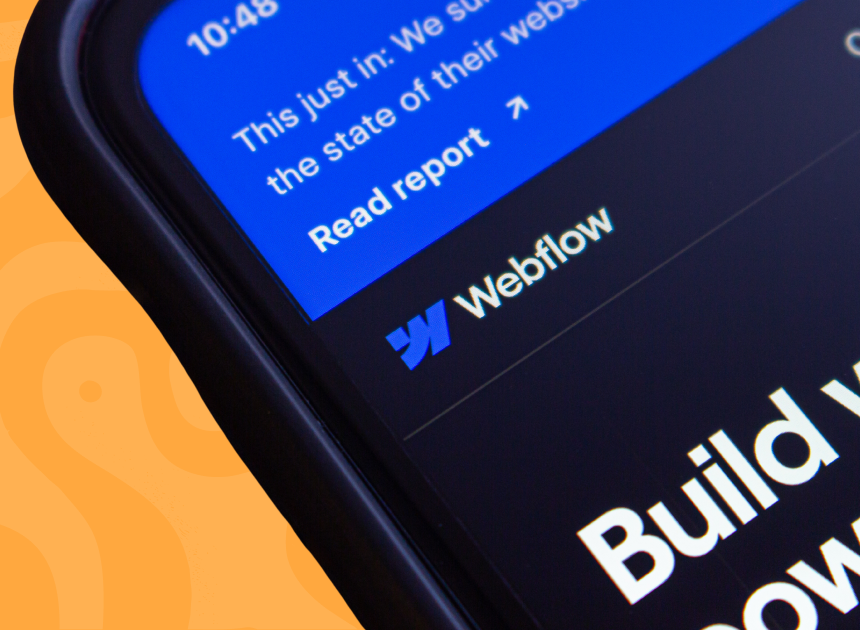You built your dental website a couple of years ago. Maybe it was with WordPress, Wix, or Squarespace. It felt fast and polished when it launched. It probably looked modern enough, loaded fairly quickly, and did its job of getting you new clients.
But lately? It feels sluggish. Pages take too long to load. The team page jumps around when it opens. Booking forms are slow to submit, or worse: they don’t submit at all. The more people try to update things, the more it seems like something breaks.
You’re not crazy. Most dental websites slow down over time.
And no, it’s not because the internet got faster or your patients became pickier. What generally happens is that small problems aggregate over time and eventually compound into noticeable problems (sometimes all at once).
Platforms like WordPress, Wix, and Squarespace all come with limitations that start to show as the site gets older. These platforms’ convenience benefits, like extensive plug-in libraries, do-it-yourself templates, and inexpensive third-party hosting, come at a cost, and that cost is sustained performance.
In this article, we breakdown the 6 main reasons why sites degrade over time (and what you can do about it):
- You’re Carrying Too Much Baggage
- Your Photos and Videos Are Too Big
- Your Platform Isn’t Aging well
- Design Tweaks Start to Conflict
- Your Hosting Is Slowing You Down
- No One Is Actively Maintaining the Site
1. You’re Carrying Too Much Baggage
Most websites, especially ones built on WordPress, start out fairly lean. But over time, they get stuffed with plugins, third-party tools, and widgets. You might have added a scheduling tool, an insurance checker, a reviews popup, Google Analytics, Facebook Pixel, or a live chat feature. Every time you bolt something new on, your site gets heavier.
Even on platforms like Wix or Squarespace, it’s easy to overload a site with animations, galleries, pop-ups, and fancy features that look great but, again, make the site heavier and heavier.
Worse, these tools often run in the background of the entire site, even if they’re only used on one page.
What to do:
- Remove tools or plugins you're no longer using.
- Ask your developer (or whoever manages the site) to audit what’s running in the background.
- Keep things focused: only load what patients actually use.
2. Your Photos and Videos Are Too Big
You upload a team photo here, a few before-and-after images there, maybe even a welcome video. They look great, but they add up. Many practices don’t realize that uploading a photo directly from a phone or camera means you’re often adding files that are 3 to 10 times bigger than they need to be.
This is one of the biggest causes of a slow website, especially for mobile users who are on slower connections.
What to do:
- Compress images before uploading. Tools like TinyPNG or Squoosh are free and easy to use.
- Use JPG or WebP formats instead of large PNGs.
- Don’t autoplay background videos unless absolutely necessary, and avoid this entirely on mobile.
3. Your Platform Isn’t Aging Well
Let’s talk WordPress for a second. When it’s maintained actively, it can be fine. Most sites aren’t, though (see #6).
We have a deep dive on Wordpress coming soon, but here is the root of most issues in Wordpress.
Wordpress has a large theme library and extremely extensive open source plug-in library, meaning that people from all over the world can write code for a specific feature and make that feature available to everyone else.
The benefit? Your developer saves time and effort in the initial site build.
The problem? When Wordpress updates (which happens frequently - major updates alone happen every few months), some themes stop being supported, and plug-ins from the open source library are not automatically updated.
Therefore, every time Wordpress updates, your site is at risk for a feature degrading or breaking entirely.
Wix and Squarespace are easier in some ways, as they have no plugins to update, but they’re not immune either. The more complex your layout becomes, the more likely you’ll run into slowdowns and rendering issues. Because these platforms use drag-and-drop tools that are built for convenience, not performance, you start to see lag as your content grows, especially if you deviate from their templates.
What to do:
- If you're on WordPress, make sure your plugins, themes, and core files are being updated regularly.
- If you’re on Wix or Squarespace, avoid stacking too many animations or effects on one page.
- Consider whether your current platform is still the right fit. Sometimes the slowdown is a sign that the foundation just wasn’t built for your current needs.
4. Design Tweaks Start to Conflict
You updated the homepage headline last month. You swapped out the contact form last week. You tried to add a new section about Invisalign or same-day crowns. Now the spacing looks off. The buttons don’t match. Pages load out of order or flash strangely on mobile.
Over time, design updates layer on top of each other. Especially with drag-and-drop platforms, it is easy to create conflicts in styling or layout without even realizing it.
What to do:
- Avoid piecemeal updates to your design. Instead, treat design changes like dental work: plan it, do it cleanly, and test it thoroughly.
- If your site’s structure is already a mess, it may be time to clean it up rather than keep patching it.
5. Your Hosting Is Slowing You Down
If your site is still hosted on a $10/month shared server (which many WordPress sites are), then your savings come at the cost of risk. Cheaper hosting means you’re sharing space with hundreds of other websites. When their traffic spikes, your site suffers.
Wix and Squarespace handle their own hosting, but you don’t control how it's optimized. As your site grows, you may start to hit invisible limits imposed by your hosting provider to help increase their own profit margins.
What to do:
- (On WordPress) Upgrade to a performance-focused host with good support.
6. No One Is Actively Maintaining the Site
Most dental sites go live and look great for a while but degrade as small issues compound with platform updates. This is a sign that no one is maintaining the site. No one is checking if forms are working. No one notices that Google updated the rules of its algorithm. No one is running speed tests or fixing issues before they affect patients.
Sites aren’t like a print ad. They’re more like a car; they need tuning, cleaning, and checks. If no one’s doing that, you’re losing speed and quality without realizing it.
What to do:
- If you’re keen on staying on your current platform, make sure you have a maintenance plan in place. This likely means paying a professional for upkeep.
- Rebuild on Webflow or a more modern system. While these systems sacrifice convenience in the initial website build, ongoing maintenance becomes a lot easier (i.e. cheaper): no plugin updates, no patching, no surprise crashes.
Wait… A Rebuild?
Sometimes you can update and optimize a site to get new life out of it. In some cases, patchwork updates to a dated site is like polishing a totaled car. If your site is built on a convenience platform and is more than a few years old or encountering speed issues or bugs, rebuilding could be the more cost-effective option.
With a rebuild, you can:
- Strip out the clutter and bloat that’s slowing everything down
- Start fresh with better tools and a lighter structure
- Move to a platform like Webflow that loads faster and requires far less upkeep
- Get a cleaner design and better mobile experience
A rebuild isn’t just about making the site look new. It’s about making it perform better, last longer, and more cost-effective in the long run.
Final Thoughts
Your website is the first impression for most potential new patients. A site that is slow, clunky, or broken (even a little) kills trust, while beauty and performance builds it.
Ready to take a serious look at your site’s performance? Reach out for an audit & recommendation action plan (free for independent dental & orthodontic practices)!
This article is the first in a series focused on sustained web performance for dental practices. Next week we will share a deep dive on Wordpress. In the coming weeks we will look at Webflow as an alternative to convenience platforms, explore the long term financial considerations of different platforms, and share a guide for determining when to update vs. rebuild your site.

_Thumbnail.png)


